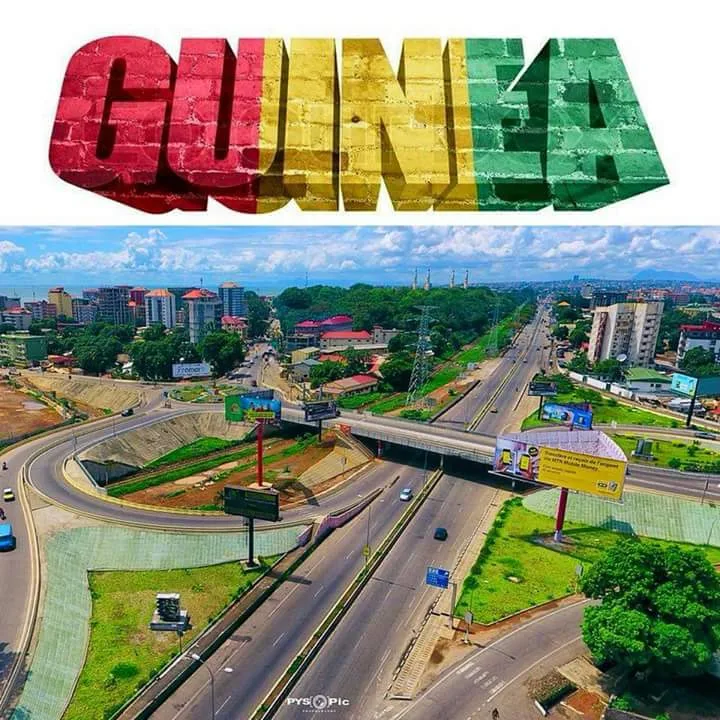West African empires
What is now Guinea was on the fringes of the major West Africa empires. The Ghana empire is believed to be the earliest of these which grew on trade but contracted and ultimately fell due to the hostile influence of the Almoravids. It was in this period that Islam first arrived in the region.
The Sosso kingdom (12th to 13th centuries) briefly flourished in the void but the Islamic Mandinka Mali Empire came to prominence when Soundiata Kéïta defeated the Sosso ruler, Sumanguru Kanté at the semi-historical Battle of Kirina in 1235. The Mali Empire was ruled by Mansa (Emperors), the most famous being Kankou Moussa, who made a famous hajj to Mecca in 1324. Shortly after his reign the Mali Empire began to decline and was ultimately supplanted by its vassal states in the 15th century.
 |
| Guinea National Carrier |
The most successful of these was the Songhai Empire, expanding its power from about 1460, and eventually surpassing the Mali Empire in both territory and wealth. It continued to prosper until a civil war over succession followed the death of Askia Daoud in 1582. The weakened empire fell to invaders from Morocco at the Battle of Tondibi just 3 years later. The Moroccans proved unable to rule the kingdom effectively, however, and it split into many small kingdoms.
Kingdoms in Guinea
After the fall of the major West African empires, various kingdoms existed in what is now Guinea.
 |
| Guinea Rail System |
Futa Jallon
Fulani Muslims migrated to Futa Jallon in Central Guinea and established an Islamic state from 1735 to 1898 with a written constitution and alternate rulers.
COLONIAL ERA
The slave trade came to the coastal region of Guinea with European adventurers in the 16th century. Slavery had always been part of everyday life but the scale increased as slaves were exported to work elsewhere in the triangular trade.
Guinea's colonial period began with French military penetration into the area in the mid-19th century. French domination was assured by the defeat in 1898 of the armies of Samori Toure, Mansa (or Emperor) of the Ouassoulou state and leader of Malinké descent, which gave France control of what today is Guinea and adjacent areas.
France negotiated Guinea's present boundaries in the late 19th and early 20th centuries with the British for Sierra Leone the Portuguese for their Guinea colony (now Guinea-Bissauw), and Liberia. Under the French, the country formed the Territory of Guinea within French West Africa administered by a governor general resident in Dakar. Lieutenant governors administered the individual colonies, including Guinea.
INDEPENDENCE IN 1958
In 1958 the French Fourth Republic collapsed due to political instability and its failures in dealing with its colonies, especially Indochina and Algeria. The founding of a Fifth Republic was supported by the French people, while French President Charles de Gaulle made it clear on 8 August 1958 that France's colonies were to be given a stark choice between more autonomy in a new French Community and immediate independence in the referendum to be held on 28 September 1958.
 |
| Sékou Touré on an official visit to the US |
The other French colonies chose the former but Guinea — under the leadership of Ahmed Sékou Touré whose Democratic Party of Guinea (PDG) had won 56 of 60 seats in 1957 territorial elections — voted overwhelmingly for independence. The French withdrew quickly, and on October 2, 1958, Guinea proclaimed itself a sovereign and independent republic, with Sékou Touré as president.




Comments
Post a Comment